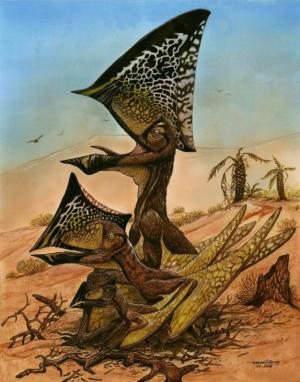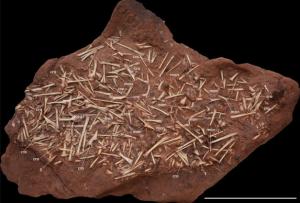
Sunday, August 17, 2014
The Daily Drift
Carolina Naturally is read in 200 countries around the world daily.
Today is - National Thrift Shop Day
Don't forget to visit our sister blog: It Is What It Is
Some of our readers today have been in:
The Americas
Trumbull, Corvalis, Sparks, Tacoma, Cicero, Kalispell and Eufaula, United States
Port-Of-Spain, Trinidad-Tobago
Liquillo, Puerto Rico
Montreal, L'ancienne-Lorette, Ottawa, Byward Market, Quebec, Vancouver and Richmond Hill, Canada
Porao De Pedras, Rio De Janeiro, Sao Paulo, Brasilia and Sobral, Brazil
Buenos Aires, Argentina
Tipitapa, Nicaragua
Europe
Nesoddtangen, Norway
Stockholm and Kista, Sweden
Cerny, Etrembieres, Veliz-Villacoublay, Dugny, Roubaix and Guerins, France
Moscow and Vladivostok, Russia
Amersfoort, Netherlands
Nottingham, London and Slough, England
Bucharest, Romania
Hamburg, Nuremberg, Konstanz, Eschborn and Kabel, Germany
Vienna, Austria
Vinnytsya and Gnedin, Ukraine
Borgo Priolo, Catania, Treviso, Ravenna and Milan, Italy
Luqa, Malta
Torrent and Madrid, Spain
Mercin, Turkey
Hluboka Nad Vltavou, Czech Republic
Sarajevo, Bosnia-Herzegovina
Athens, Greece
Zawiercie, Poland
Asia
Yokohama, Japan
Hanoi, Vietnam
Kolkata, Bikaner, Mumbai, Jodhpur, New Delhi, Pune, Barmer and Bangalore, India
Colombo and Galkissa, Sri Lanka
Kota Kinabalu and Kuala Lumpur, Malaysia
Singapore, Singapore
Islamabad, Pakistan
Port Louis, Mauritius
Bishkek, Kyrgyzstan
Semarang, Indonesia
Africa
Radis, Tunisia
Cape Town, South Africa
Ndola, Zambia
Annaba, Algeria
The Pacific
Auckland, New Zealand
Sydney, Melbourne and Brisbane, Australia
Manila and Quiapo, Philippines
Today in History
| 1743 | By the Treaty of Abo, Sweden cedes southeast Finland to Russia, ending Sweden's failed war with Russia. | |
| 1812 | Napoleon Bonaparte's army defeats the Russians at the Battle of Smolensk during the Russian retreat to Moscow. | |
| 1833 | The first steam ship to cross the Atlantic entirely on its own power, the Canadian ship Royal William, begins her journey from Nova Scotia to The Isle of Wight. | |
| 1863 | Union gunboats attack Fort Sumter in Charleston, South Carolina, for the first time. | |
| 1942 | Marine Raiders attack Makin Island in the Gilbert Islands from two submarines. | |
| 1943 | Allied forces complete the conquest of Sicily. | |
| 1944 | The mayor of Paris, Pierre Charles Tattinger, meets with the German commander Dietrich von Choltitz to protest the explosives being deployed throughout the city. | |
| 1945 | Upon hearing confirmation that Japan has surrendered, Sukarno proclaims Indonesia's independence. | |
| 1960 | American Francis Gary Powers pleads guilty at his Moscow trial for spying over the Soviet Union in a U-2 plane. | |
| 1978 | Three Americans complete the first crossing of the Atlantic in a balloon. | |
| 1987 | 93-year-old Rudolf Hess, former Nazi leader and deputy of Hitler, is found hanged to death in Spandau Prison. | |
| 1988 | Pakistani President Zia-ul-Haq is killed in an airplane crash suspected of being an assassination. | |
| 1998 | President Bill Clinton admits to the American public that he had affair with White House intern Monica Lewinsky. | |
| 1999 | A 7.4-magnitude earthquake near Izmit, Turkey kills over 17,000 and injures nearly 45,000. | |
| 2005 | Israel begins the first forced evacuation of Israeli settlers from the Gaza Strip and northern West Bank, as part of a unilateral disengagement plan. | |
| 2012 | Moscow's top court upholds ban of gay pride events in Russia's capital city for 100 years. |
Man in Airport Waiting for His Flight Plays “Für Elise” in Many Styles
There is nothing fun about waiting for your plane at an airport. It’s boring and stressful. But if you’re lucky, then Maan Hamadeh
is waiting for the same flight. He’s a pianist from Lebanon. While he
was waiting for his plane in Prague, he entertained himself and his
fellow passengers by showing with a master musician can do. Watch him
play Beethoven’s “Für Elise” in multiple styles. Hamadeh is a great showman who starts out slow, then rises in vibrancy and passion.
Later, he also played theme music from one of the Twilight movies.
Some Of The Most Beautiful Doors That Seem To Lead To Other Worlds
Most doors are hopelessly mundane, but they don't have to be; they can
also serve as meaningful symbols of portals between worlds or between
different aspects of our lives. Here's a list of truly amazing doors that have been decorated with beautiful craftsmanship and artwork.
11 Smells That Are Slowly Disappearing
Nothing can trigger a memory so unexpectedly as an aroma. Clove oil
immediately transports you to the dentist's office. Crayola crayons take
you back to elementary school. But some fragrances are being phased out of existence thanks to technology and safety regulations. How many of these do you miss?
Mitch McConnell's wife is Major (player) in the 'war on coal'
Can you say 'Trey Awkward'
"Hey, she's only on two anti-coal boards!"
.
In the course of Kentucky Sen. Mitch McConnell's re-election campaign, he has relied on two lines of attack: Trying to convince voters that Alison Lundergan Grimes is a black man from Kenya and accusing her of being a foot soldier in the so-called "war on coal." But as it turns out:
McConnell's wife, former Secretary of Labor Elaine Chao, sits on the board of directors of Bloomberg Philanthropies, which has plunged $50 million into the Sierra Club's "Beyond Coal" initiative, an advocacy effort with the expressed goal of killing the coal industry.Oops. And there's more:
In 2011, Bloomberg Philanthropies teamed up with the Sierra Club to target coal plants for closure in an effort to "end our nation's reliance on dirty coal, plant-by-plant, community-by-community, and state-by-state," according to Bloomberg Philanthropies' website ... The organization boasts that it has "prevented 150 coal plants from being built," and has taken direct action against 16 plants in McConnell's homestate of Kentucky, arguing that coal production is a health hazard and is harmful to the environment.
Chao's relationship with Bloomberg Philanthropies isn't the only group she represents that has taken a stand against the coal industry. She also sits on the Board of Directors at Wells Fargo, which in 2013 announced that it would divest from surface mining of coal in Appalachia due to environmental concerns.In a recent ad, McConnell said:
"I will be the leader of the forces that take on the war on coal. We've got to fight back in this war on coal. Damn right. We're not going to sit there and take it, I can assure you that."Yeah, Mitch isn't going to just sit there and take it. But the McConnell family's bank account is going to sit there and take in the hundreds of thousands of dollars that his favorite campaign surrogate is raking in for waging that "war on coal."
Wingnut alternate reality starts with the children
The wingnut delusion has
spent years designing an alternate reality for its membership. It's a
universe in which climate change isn't real, but the terrorist attack in
Benghazi was a full-blown cover-up. In this universe, Mitt Romney had
the 2012 presidential election in the bag, the Affordable Care Act is
still a massive failure, and every single conspiracy theory about the
left isn't just a theory: it is simply known, with no citations
necessary. As Paul Harris wrote after his encounter with the 2013
edition of cpac:
At the wingnut coven cpac last week the enormity of this media world was remarkable. The hall was packed with hate speech radio shows, wingnut publishers and authors signing their latest books, many of which were bestsellers. This is a world where it is seriously believed that the United Nations is trying to take over the US, and Obama is a Kenyan socialist, an Islamist, a Marxist or the biological son of communist-sympathiser Frank Marshall Davis. This is a world where Obama wants to take away all guns, where he has dictatorial powers worthy of an emperor and where the US media is a liberal conspiracy pushing abortions and being gay. This is the world where Glenn Beck, former Faux TV host turned popular publisher of The Blaze website, is hugely powerful and shock jock Lush Dimbulb is king.The basic thesis behind the alternate universe is that the wingnut authoritarian personalities, perhaps best described by John Dean, feed off a media echo chamber that must become increasingly hyperbolic to gin up the necessary outrage to produce desired electoral outcomes. All the while, wingnut media hacks, chiefly Lush Dimbulb, enforce orthodoxy by keeping politicians who know better from bursting anyone's bubble. It's an adequate methodology for drawing in and permanently entrapping those who were already in wingnuttery's orbit, but not so good for attracting new followers to the cause. Unfortunately, for anyone with an appreciation for facts, however, it looks like the wingnut media operation is no longer content just with selling its existing "nonfiction" wares to adults.
Texas court rules against homeschoolers who expected rapture and stopped teaching kids
A Texas
court ruled this month that parents who allegedly stopped homeschooling
their kids because they believed jesus christ was returning to Earth
were not exempt from state education regulations.
According to a ruling last week by the Texas Eighth District Court of Appeals, Michael McIntyre and Laura McIntyre removed their nine children from a private school in 2004 to home-school them.
Michael McIntyre's twin brother, Tracy, testified that the parents used empty space in a motorcycle dealership that he co-owned as a classroom. But Tracy said that he never saw the children reading books, using computers or doing arithmetic. Instead, the children were seen playing instruments and singing.
"Tracy overhead one of the McIntyre children tell a cousin that they did not need to do schoolwork because they were going to be raptured," the court document noted.
According to a ruling last week by the Texas Eighth District Court of Appeals, Michael McIntyre and Laura McIntyre removed their nine children from a private school in 2004 to home-school them.
Michael McIntyre's twin brother, Tracy, testified that the parents used empty space in a motorcycle dealership that he co-owned as a classroom. But Tracy said that he never saw the children reading books, using computers or doing arithmetic. Instead, the children were seen playing instruments and singing.
"Tracy overhead one of the McIntyre children tell a cousin that they did not need to do schoolwork because they were going to be raptured," the court document noted.
Teenager assaulted friend after not being invited to hang out and eat cheesesteaks
 A teenager upset that his friends didn't invite him over to eat
cheesesteaks in Hellertown, Pennsylvania, allegedly dragged one of his
friends down a flight of stairs and kicked the victim in the face,
according to court records.
Police say William Joseph Hitchcock-Sahr Jr., 18, called Brandon Ridgick
on Monday and found out Ridgick and two others were hanging out at a
residence eating cheesesteaks.
A teenager upset that his friends didn't invite him over to eat
cheesesteaks in Hellertown, Pennsylvania, allegedly dragged one of his
friends down a flight of stairs and kicked the victim in the face,
according to court records.
Police say William Joseph Hitchcock-Sahr Jr., 18, called Brandon Ridgick
on Monday and found out Ridgick and two others were hanging out at a
residence eating cheesesteaks. Hitchcock-Sahr went round to the address and started arguing because he wasn't invited and Ridgick hadn't bought him a sandwich. Hitchock-Sahr dragged Ridgick down a flight of stairs and broke multiple facial bones by kicking him in the face, authorities say.
Hellertown police say Ridgick's face was "deformed" and bloodied from the assault. Hitchcock-Sahr was arraigned before on-call District Judge Jacqueline Taschner on charges of aggravated assault, simple assault and harassment. He was sent to Northampton County Prison in lieu of $35,000 bail with a 10% option.
Woman attacked with jar full of jam in dispute about shampoo
 A Florida woman faces a charge of aggravated assault with a deadly
weapon after she used a full jar of jam (jelly) to attack another woman
on Monday.
A Florida woman faces a charge of aggravated assault with a deadly
weapon after she used a full jar of jam (jelly) to attack another woman
on Monday.
Denisha Day, 20, was arguing with another woman because the woman’s daughter poured out some of her shampoo.
Day, of Belle Glade, wanted the woman to pay for the shampoo and the argument turned into a physical fight.
After family members broke up the fight, Day charged at the woman with the jar of jam, causing a large lump on the side of her face. Day was released from Palm Beach County Jail on Tuesday afternoon on $2,000 bail.
Day, of Belle Glade, wanted the woman to pay for the shampoo and the argument turned into a physical fight.
After family members broke up the fight, Day charged at the woman with the jar of jam, causing a large lump on the side of her face. Day was released from Palm Beach County Jail on Tuesday afternoon on $2,000 bail.
Motorcyclist struck in hit-and-run incident accidentally shot himself in the chest
In an unusual chain reaction, police in Black Hawk, Colorado, say a
motorcyclist was shot in the chest when a gun he was carrying went off
as a hit-and-run car struck the motorcycle.
The hit-and-run happened at about 10:15am on Wednesday in Black Hawk.
A four-door Chevrolet sedan hit the motorcycle and the rider was thrown to the ground, Police Chief Stephen Cole said.
The impact of the collision caused a handgun the motorcyclist was carrying to fire,
shooting the rider in the chest.
The car driver fled the scene. The motorcyclist, a 60-year-old
Pennsylvania man, suffered serious injuries and was rushed by ambulance
to a Denver hospital.
Police recovered the handgun at the scene. Gilpin County sheriff's deputies later found the Chevy sedan abandoned at a campground north of Black Hawk. The driver, a man in his 30s or 40s, ran from the car. Police arrested the hit-and-run suspect at about 1:30pm.
Police recovered the handgun at the scene. Gilpin County sheriff's deputies later found the Chevy sedan abandoned at a campground north of Black Hawk. The driver, a man in his 30s or 40s, ran from the car. Police arrested the hit-and-run suspect at about 1:30pm.
Anthropological News
Ancient Egyptians may have started mummifying their dead 1,500 years earlier than previously thought.
2nd Wave of Isolated People Makes Contact with Outsiders in Brazil
 Pushed out of their home
territory by violence, a second wave of people who had been living in
voluntary isolation in the Amazon rainforest has made contact with
villagers in Brazil, according to an advocacy group.
Pushed out of their home
territory by violence, a second wave of people who had been living in
voluntary isolation in the Amazon rainforest has made contact with
villagers in Brazil, according to an advocacy group.
These 24 men, women and children belong to the same tribe as the "uncontacted" people who emerged in a Brazilian village
in late June, claiming that they had suffered violent attacks from
outsiders, according to Survival International, a group that advocates
for tribal people's rights.
When
isolated tribes make contact with people in settled communities, they
are at risk of being wiped out by common diseases, such as the flu and
measles, against which they have no immunity. The first wave of seven
people to make contact developed flu-like symptoms
last month, Brazilian officials said. They were treated for acute
respiratory infections and put in quarantine before they went back to
their home territory, which is across the border in Peru.
The
second wave of people, who emerged sometime in the last few weeks, is
reportedly in good health. They have been residing at the Xinane
monitoring post operated by FUNAI, Brazil's indigenous affairs
department, in Brazil's Acre state, Survival International officials said.
"It
is crucial that the Indians who have made contact receive top-quality
health care and monitoring there at the FUNAI base, as they have very
little immunity to diseases, which could wipe them out," Sarah Shenker,
Survival International's Brazil campaigner, said by email.
"Uncontacted tribes are the most vulnerable peoples on the planet."
Last month, FUNAI released a video clip showing the tribe's initial, voluntary contact with the Ashaninka people in
the village of Simpatia. The tribe members, who speak a Panoan
language, said through an interpreter that they had been attacked by
gun-wielding non-Indians who killed many of the older people in their
group, according to Survival International. In another sign of their
interactions with outsiders, these tribe members were also carrying a
gun, some screws and other items that they may have purloined from a
logging camp, a Survival International official told Live Science last
month.
This second group of uncontacted people also said they were fleeing violence in Peru, Shenker said.
"The
Brazilian government has requested that the Peruvian government
investigate this and protect the land. As far as we know, the Peruvian
government has not yet committed to anything," Shenker said. "We do
know, however, that this area in Peru is invaded by illegal loggers and
cocaine traffickers."
Viking Ship Discovered Near Mississippi River

A group of volunteers cleaning up the shores of the Mississippi river
near the biggest city in Tennessee, have stumbled upon the remains of an
ancient boat encrusted in mud. A team of archeologists from the
University of Memphis that was rapidly called to the site, confirmed
that the ship is most certainly a Viking knarr, suggesting the Norse
would have pushed their exploration of America a lot further than
historians previously thought.
The heavily damaged ship was found near the confluence of the Wolf
and Mississippi rivers, and lies on a private property. It has a length
of about 16 meters, a beam of 4.5 meters, and a hull that is estimated
capable of carrying up to 24 to 28 tons, a typical size for this type of
ship. Knarrs were naval vessels that were built by the Norsemen from
Scandinavia and Iceland for Atlantic voyages, but also used for trade,
commerce, exploration, and warfare during an era known as the Viking
Age, that goes approximately from 793 to 1066 AD. They were clinker
built, which means the overlapping of planks riveted together. It was
capable of sailing 75 miles (121 km) in one day and held a crew of about
20 to 30 men.
One of the only artifacts on the site, this sword was probably abandoned after it broke, suggesting a violent battle.
Butternuts found in the Newfoundland site had already suggested that the Norse had explored the continent because they do not grow naturally north of the Canadian province of New Brunswick, hundreds of kilometers away from any known Viking settlement.The carbon dating of the new ship estimates that it dates from between 990 and 1050 AD, approximately the period associated with Vinland and the various Canadian sites (L’Anse aux Meadows, Tantfield Valley, Avayalik Islands). This could mean that the that the Viking had actually developed a far wider trade network in the Americas that what was traditionally believed. Unfortunately, very few other artifacts have yet been found on the site, suggesting the crew must have most likely abandoned the ship and continued on foot.

Professor
James Milbury, who leads the research team working on the site,
believes the Norse could have been killed by Chickasaw natives.
More searches are to be expected in the area over the next few years,
as scientists will now certainly try to look for any artifacts or
historical traces that could lead them to understand what happened to
the crew of the ship. Many myths from local native tribes will also be
analyzed by historians from the team to see if they could hold useful
information, as both Chickasaw and Choctaw mythologies include many
stories of fights against “red-haired devils”.
Henge Discovered in England
Archaeologists excavating an area slated for development in
North Kent have uncovered a 6,000-year-old Neolithic henge, reports the Canterbury Times.
Consisting of two circular ditches, with the outermost reaching about
100 feet in diameter and featuring an entrance that faces northeast, the
site was likely a ceremonial gathering place similar to
Stonehenge. SWAT Archaeology's Paul Wilkinson, who led the project,
believes the outer ring was made in the Neolithic, and the inner ring
was added later, in the Bronze Age, when the henge became a funeral
monument. A second, smaller ring discovered nearby may have also been
used as a cemetery during the Bronze Age. There are signs that the
monuments might have later been re-purposed as livestock pens.
Archaeological News

No other site has so far been located in this area, which extends over some 1800 square miles in the Mexican jungle.

One of the cities featured an extraordinary facade with an entrance representing the open jaws of an earth monster.
Petrified Fire Scars
After serving nearly 30 years as a doorstop for a nuclear
physicist, a hunk of petrified wood has finally been recognized as a
one-of-a-kind find.
Earth News

The glaciers on the Tibetan plateau -- which provide
freshwater for millions -- are warmer than in the past two millennia.

The 10 Most Important Days in the History of the Universe (according to an astronomer)

1. July 4, 1054 -- Day the Sky Got Brighter
This 2005 NASA's Hubble Space Telescope image of Crab Nebula shows the remnant of star's supernova explosion.July 4th was a significant day long before America started celebrating it. It also marks the first time on record that a new object appeared in the constellation Taurus -- an object so bright it could be seen in the daytime sky. Not surprisingly, people around the world couldn't help but take notice. Chinese astronomers labeled it a "guest star" and noted that, at night, it shone almost four times brighter than Venus. They soon began speculating that its appearance heralded the Emperor at the time, Jen Tsung.
Meanwhile, on the other side of the globe, the Anasazi Indians of western North America may also have noticed the star. Archeologists believe images carved into Arizona rocks from that era depict the same mysterious phenomenon. But one group of people left no record of having witnessed the "guest star" -- the Europeans. It's speculated they considered it heretical to suggest that anything in the night sky was not eternal.
The Chinese astronomers were right about the object being a star. More specifically, however, it was a star in the process of exploding, otherwise known as a supernova. When stars burst, they are momentarily as bright as a billion stars, so even though the phenomenon had occurred so far away from Earth, its brightness was still immense.
Now known as the Crab Nebula, this supernova remnant is hardly a distant memory. Today, it consists of an expanding shell of gas that's 10 light years across and is moving outward at about 700 miles per second. At its center is a dense remnant called a neutron star, which is about the size of Manhattan in radius and rotates roughly 30 times per second. As a result, the Crab Nebula sends out pulses of radiation that reach the Earth at that same rate. Scientists wondered about the source of this mysterious pulsing when it was first detected in 1968, but they quickly pinned it on the ancient Crab and not, say, alien civilizations trying to contact us.
Astronomical News
An orbiting Mars camera has spotted the aftermath of a fun
event on Mars: A boulder that has rolled down a steep slope -- and ended
up resting on its long axis as a standing stone.
Whimsical World-Wide Weed
The Dandelion
 The humble dandelion. From your garden to almost the ends of the Earth
this small but conspicuous plant flourishes. Gardeners do not appreciate
its presence, considering it a weed, even though its flowering usually
indicates the beginning of the honey bee season and could be seen as a
welcome sign.
The humble dandelion. From your garden to almost the ends of the Earth
this small but conspicuous plant flourishes. Gardeners do not appreciate
its presence, considering it a weed, even though its flowering usually
indicates the beginning of the honey bee season and could be seen as a
welcome sign.Its simplistic looking structure hides a few surprising secrets and its cultural resonance, especially in Europe is strong. Here is a short but sincere homage to one of the small wonders of our botanical world, the dandelion.
Paleontological News
The Natural Trap Cave excavation poses some unusual
challenges, like how to get through customs with piles of dirty,
50,000-year-old bones.
Flock of Ancient 'Butterfly-Headed' Flying Reptiles Discovered

An ancient flying reptile with a bizarre, butterflylike head has been unearthed in Brazil.
The newfound reptile species, Caiuajara dobruskii,
lived about 80 million years ago in an ancient desert oasis. The beast
sported a strange bony crest on its head that looked like the wings of a
butterfly, and had the wingspan needed to take flight at a very young
age.
Hundreds of fossils from the reptile were unearthed in a single bone bed, providing the strongest evidence yet that the flying reptiles were social animals, said study co-author Alexander Kellner, a
paleontologist at the Museu Nacional/Universidade Federal do Rio de
Janeiro in Brazil.
Rare find
Though pterosaur fossils have been unearthed in northern Brazil,
no one knew of pterosaurs fossils in the southern part of the country.
In the 1970s, a farmer named Dobruski and his son discovered a massive
Cretaceous Period bone bed in Cruzeiro do Oeste in southern Brazil, a
region not known for any fossils, Kellner said. The find was forgotten
for decades, and then rediscovered just two years ago. The team dubbed
the reptile Caiuajara dobruskii, after the geologic formation,
called the Caiuá Group, where it was found, as well as the farmer who
discovered the species, Kellner said.
C. dobruskii belonged to a group of winged reptiles known as pterosaurs, which are more commonly known as pterodactyls.

A bone bed filled with with fossils from a new species of pterosaur, Caiuajara dobruskii
Hundreds of bone fragments from the species were crammed in an area of
just 215 square feet (20 square meters). At least 47 individuals — and
possibly hundreds more — were buried at the site. All but a few were
juveniles, though the researchers found everything from youngsters with
wingspans of just 2.1 feet (0.65 m) long to adults with wingspans
reaching 7.71 feet (2.35 m). The fossils weren't crushed, so the 3D
structure of the animals was preserved, the authors wrote in a research
article published today (Aug. 13) in the journal PLOS ONE.
The ancient reptiles' bony crests changed in size and orientation as the pterosaurs grew.
Because the adult skeletal size (other than the head) wasn't much
different from the juveniles', the researchers hypothesized that C. dobruskii was fairly precocious and could fly at a young age, Kellner said.
Water congregation
Based on the sediments in which the bones were found, the area was once
a vast desert with a central oasis nestled between the sand dunes, the
authors wrote in the paper.
Ancient C. dobruskii colonies
may have lived around the lake for long periods of time and died during
periods of drought or during storms. As the creatures died, the
occasional desert storm would wash their remains into the lake, where
the watery burial preserved them indefinitely, the researchers said.
Another possibility is that the pterosaurs stopped at this spot during ancient migrations, though the authors suspect that is less likely.
The bone bed, with its hundreds of individuals in well-dated geological
layers, is some of the strongest evidence yet that the fruit-eating
animals were social, Kellner said.
"This was a flock of pterosaurs," Kellner said.
This finding, in turn, strengthens evidence that other pterosaur
species may have been social as well, the authors wrote in the paper.
Our Microbiome May Be Looking Out for Itself

A number of recent studies have shown that gut bacteria can use these signals to alter the biochemistry of the brain. Compared with ordinary mice, those raised free of germs behave differently in a number of ways. They are more anxious, for example, and have impaired memory.So far, it sounds pretty benign. After all, microbes who live in us depend on our continued well-being, right? So far, research shows that behavior that benefits microbes doesn’t always benefit the host, but when they harm us, we go full-throttle after them. However, knowing about this mechanism may one day lead to humans being able to control what microbes do in our bodies to our benefit. Read more at the New York Times.
Adding certain species of bacteria to a normal mouse’s microbiome can reveal other ways in which they can influence behavior. Some bacteria lower stress levels in the mouse. When scientists sever the nerve relaying signals from the gut to the brain, this stress-reducing effect disappears.
Some experiments suggest that bacteria also can influence the way their hosts eat. Germ-free mice develop more receptors for sweet flavors in their intestines, for example. They also prefer to drink sweeter drinks than normal mice do.
Scientists have also found that bacteria can alter levels of hormones that govern appetite in mice.














